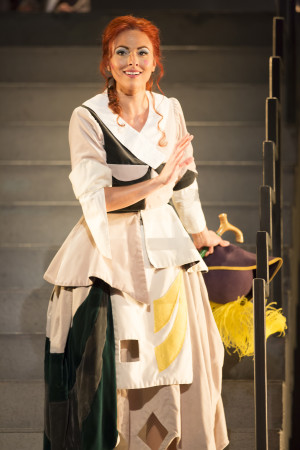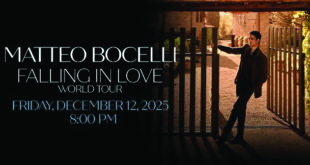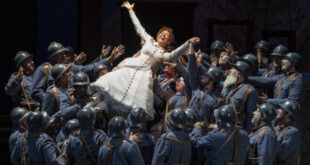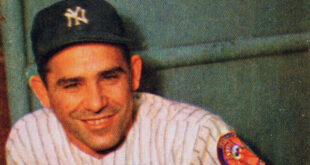 “From rags to riches” has been an extremely common literary theme since literacy began. One of its most popular variations is the “Cinderella” story, which itself has spawned oodles of variations. I myself created one such variation, a one-act musical play for my mostly African-American high school students with a pro football twist back in the ’70s. By far the best-known Cinderella tale is that of the Brothers Grimm, with the mean stepmother, two nasty stepsisters and a Fairy Godmother. In Rossini’s opera of 1817 (libretto by Jacopo Feretti) the stepmother is replaced by Don Magnifico, a stepfather, and the Fairy Godmother is replaced by Alidoro, a philosopher. The opera’s full title was “La Cenerentola, ossia la bontà in trionfo” (“Cinderella, or Goodness Triumphant”).
“From rags to riches” has been an extremely common literary theme since literacy began. One of its most popular variations is the “Cinderella” story, which itself has spawned oodles of variations. I myself created one such variation, a one-act musical play for my mostly African-American high school students with a pro football twist back in the ’70s. By far the best-known Cinderella tale is that of the Brothers Grimm, with the mean stepmother, two nasty stepsisters and a Fairy Godmother. In Rossini’s opera of 1817 (libretto by Jacopo Feretti) the stepmother is replaced by Don Magnifico, a stepfather, and the Fairy Godmother is replaced by Alidoro, a philosopher. The opera’s full title was “La Cenerentola, ossia la bontà in trionfo” (“Cinderella, or Goodness Triumphant”).
“La Cenerentola” is not, and never will be as popular as his “Il barbiere di Siviglia” (1816) but it boasts some truly beautiful music and holds a firm position in the standard repertoire. Its delightful overture (one Rossini had first used for his 1816 “La gazzetta”) is a staple with every major symphony orchestra. The Cinderella character, named Angelina, is scored for a low mezzo or contralto with excellent coloratura chops. For a long time this low mezzo scoring (very typical of Rossini) had a negative effect on the opera’s popularity. Sopranos have long enjoyed the greatest focus of audience attention. But over the past few decades we are seeing a resurgence of mezzos and contraltos. So we may expect to see more operas like “Cenerentola” staged in the near future.
As we would expect, Don Magnifico is scored for a basso buffo, and his music is predictably overly pompous as the opera begins, and ultimately humorously pathetic when he is on the brink of ruin at the end. It is no surprise either that a series of pretty duets between Angelina and Prince Ramiro accompany the love story that weaves through the opera. Nor is it remarkable to hear a number of soprano-mezzo duets sung by the unkind stepsisters. But what intrigues us, perhaps because of their foreign nature to the Cinderella tale we know so well, are the Dandini and Alidoro roles.
We have already mentioned that the bass Alidoro takes the place of the Fairy Godmother, but the baritone Dandini is something completely new to the story. In “Cenerentola,” he is in reality Prince Ramiro’s valet, but spends much of his time impersonating his boss. Thus he is given much to sing — as a matter of fact, a really good Dandini can steal the show! He is so imperious that you almost believe that he is the Prince! Alidoro, on the other hand, although he has a good share of the music, sings very introspectively much of the time, befitting a philosopher I suppose.
When all these musical pieces are put together in Rossini’s inimitable style, you have a brilliant show that makes you wonder why you haven’t seen it before. But thanks to the Lyric Opera we can see it live this year! I can hardly wait!
Lyric Opera’s “La Cenerentola”
Isabel Leonard — Angelina (Cenerentola)
Lawrence Brownlee — Prince Ramiro
Vito Priante — Dandini
Christian Van Horn — Alidoro
Conductor — Sir Andrew Davis
Stage Director — Joan Font
Set Designer — Joan Guillen
Performance dates
October 4, 7, 10, 13, 17, 23, 26, 30
For tickets or more info visit www.lyricopera.org or call 312-827-5600
 Fra Noi Embrace Your Inner Italian
Fra Noi Embrace Your Inner Italian





